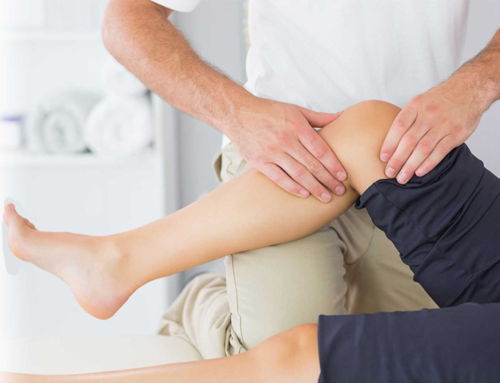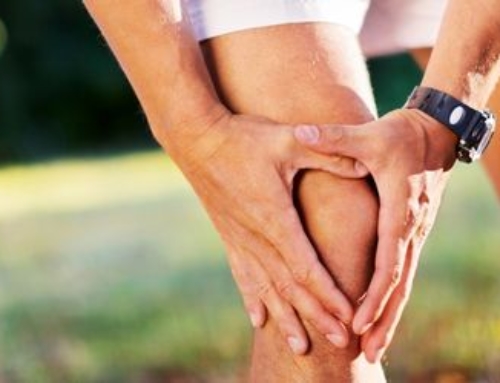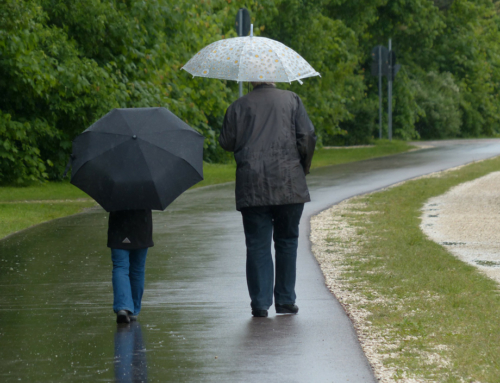You are just getting into your running groove, maybe training for an event or just enjoying getting out in the fresh air, but that pesky pain in your knee which started as a niggle, just won’t go away. Sound familiar? Look no further…
Complete Physio’s Kessie Wynne provides a comprehensive guide to the ins and outs of running related knee pain, including the main diagnoses, which factors can contribute and what you might be able to do to ease or prevent it.
What Causes Knee Pain When Running?
When it comes to running, unfortunately picking up an injury is reasonably common. In fact, research has shown approximately 20% of runners training for an event will get injured1, and of those, the knee is the part of the body most likely to cause you bother2.
Overuse injuries account for 70-80% of running related injuries3 and women are more likely to pick up an injury around the knee than men2.
Below we discuss the most common knee injuries amongst runners and unpick some of the factors which might be feeding into that troublesome knee pain.
Overuse injuries
The term overuse injury refers to an injury that can’t be put down to a single event or incident. It typically comes about due to doing a repetitive movement or activity that puts a certain tissue or body part under more stress or strain than it is able to comfortably tolerate. That niggly pain is often your body’s way of telling you that a particular tissue is being put under too much load.
Running is a prime example of a repetitive activity, propelling your body from one foot to the other, on average 160 times per minute. It might surprise you quite how much force your body withstands when running.
The table below shows the force absorbed by the front of the knee in various activities, with running topping the leader board at a whopping 5.2 times body weight per step.
Patellofemoral joint reaction force across different activities4
| Activity | Load Across Front Of Knee |
|---|---|
| Walking | 0.9 x body weight |
| Going down stairs | 2.8 x body weight |
| Going up stairs | 3.2 x body weight |
| Running | 5.2 x body weight |
A specific tissue can become overloaded for a number of reasons which we will explore in a bit more detail later.
Biomechanics refers to the way in which you move your body; a glitch in the chain of movement can cause another part of your body to take the flack.
Training load is probably the single most important factor in preventing knee injuries. It’s important to look at not only how much running you are doing, but what type of running, how much rest and recovery you are getting and what else you are (or aren’t) doing, including stretching and strength and conditioning.
Finally, running technique and footwear can both play their part.
Trauma
Whilst much less common than overuse injuries, trauma can occasionally be responsible for knee injuries when running. A rogue branch, excitable canine or disorderly cycle can turn a perfectly paced training run into an unexpected long hobble home.
Any noticeable swelling, an inability to weight bear, the knee locking or giving way, or an injury that just isn’t settling? It’s time to book into see a Physio and get some professional advice.
Common knee injuries in runners
Described below are some of the most common running related knee injuries.
ITB friction syndrome (Runner’s knee)
The iliotibial band (ITB) is a long stretch of connective tissue which runs down the outside of your thigh from your hip to the outside of your knee.
ITB friction syndrome causes pain and irritation at the point on the outside of the knee where the ITB inserts. This is commonly known as ‘Runner’s knee’, mainly because running seems to be the primary trigger.
Discomfort commonly builds up gradually, but if ignored, all too often will soon be sore enough to curtail a long run.
Stretching, foam rolling and icing can be useful in managing a grumbling case of runner’s knee, but if the pain is affecting your training, a thorough biomechanical assessment by an experienced Physiotherapist is worthwhile. The Physio will look at how you move and test the strength and flexibility of the relevant muscles. The key to long term resolution of Runner’s knee requires a targeted strengthening programme to optimise your movement patterns and avoid unnecessary loading through the outside of the knee.
If the pain is particularly troublesome, or if you are desperate to settle it down very quickly (with a view to running in a particular event for example), a corticosteroid injection may be an option, alongside your rehabilitation.
Patellofemoral pain syndrome
Below we discuss some important factors to consider when planning your training to keep injuries at bay.
To stretch or to strengthen?
Stretching and strength and conditioning can be a really important, and often overlooked, part of running training.
There can be some value in a targeted stretching program if you have specific tightness in a certain muscle group, particularly if you are injured or experiencing pain. However, routine stretching has not been shown to either prevent injury, or improve performance5.
Strength training has been conclusively shown to improve running economy6 and running speed7 and should form part of any good running training programme. You don’t necessarily need to go to a gym, a short session of body weight exercises, including single leg or split stance positions can target all the required muscle groups.
Rest, recovery and training plans
When it comes to running training, rest can be as important as running and is an absolutely vital consideration in your training programme. Rest is the time your body has to recover, repair and adapt to all the hard work you are putting into your training. Not enough rest and recovery, and you won’t see the results from your training and could risk getting injured.
Research has shown that in fatigued conditions, there is a negative impact on your single leg postural control (the ability to control your body position on one leg), ankle joint position sense (the ability for your body to detect the position of your ankle and place it on the ground accurately) and the strength of your thigh muscles8.
Running too frequently, or with too little variation are amongst the biggest mistakes we see runners make. Running speed and intensity should be varied throughout the week and long runs should be slow and pace should feel easy. Many publicly available training plans advocate running 5 or 6 times a week, and for many recreational runners, this is simply too much for them. Another common issue can be increasing your training load/ mileage too quickly. Starting your training plan early will allow time to progress at a much more tolerable pace, and a little wiggle room in case an unwanted cold or minor injury throws you slightly off course.
When it comes to rest, we mean rest from running, and this doesn’t necessarily need to be total rest. It’s often a good idea to consider non-running related activities which could complement your running training and provide some balance in the overall load to your body… yoga, Pilates, dancing or swimming could all be options.
The final and probably most important and most frequently overlooked consideration when it comes to running recovery is sleep. Sleep is the most restorative thing we can do for our body and mind and yet most of us get nowhere near enough of it.
Running form, cadence and footwear
Advice about proper running form can be a bit of a minefield and the truth is that there is no ‘one fits all’ approach. You only need to watch the elite level runners in a marathon race to see that there is a wide variety of safe and effective running styles.
However, if you have knee pain when you run, there may well be some tips or minor adjustments to your technique which might modify how you load certain tissues.
When it comes to knee pain when running, research suggests that increasing cadence (the number of steps you take per minute) can decrease the load across the front of your knee and decrease knee pain9.
However, a choice to change your running style or step rate should be taken with caution. Anecdotally, runners who increase their cadence reduce the load across the knee but may increase the load on tissues around the ankle such as the Achilles. Any such changes should be introduced gradually, and ideally under the guidance of a professional.
In terms of footwear, the most appropriate shoes for you will depend on your foot shape, width, running style and the type of running and distance you want to run. In some runners, the use of an orthotic (insole) may be useful to help temporarily offload a tissue which is injured or overloaded. If you think you might need a customised orthotic, a specialist sports podiatrist can help.
Management of Runner’s knee pain
If your knee pain has been troubling you for more than a few weeks, or if it is affecting your training, the best first step to getting on the best management plan will be to speak to an experienced Physiotherapist for a thorough assessment and advice.
The Physiotherapist will make a detailed assessment, consider your training plan and what you are aiming to achieve, and be able to assess your movement patterns, strength, flexibility and running technique. It isn’t always necessary to stop running, but there may be some tips as to how your training plan can be optimised to encourage a swift return to normal pain free running.
Treatment is very likely to involve some stretching or strengthening exercise, but alongside this, we may well be able to help things feel better with additional treatment options such as manual therapy, massage, acupuncture, taping, orthotics or footwear advice, extracorporeal shockwave therapy (ECSW) and in some cases, ultrasound guided injections.
Conclusion
In conclusion, there are a number of factors which can contribute to knee pain when running. The majority of injuries occur as a result of overuse. It is rarely necessary to hang up your running shoes permanently.
Most cases of running related knee pain can be alleviated by a thorough biomechanical assessment and some specialist advice on strengthening, stretching and training modification.
In terms of self-help, have a careful look at your running schedule and check you are getting enough rest, variety and progressing gradually. Consider including strength training for a well-balanced training plan.
If knee pain is getting in the way of you fulfilling your running aspirations, our team of expert Physiotherapists would love to help.
References:
- Dallinga J, Van Rijn R, Stubbe J, Deutekom M. Injury incidence and risk factors: a cohort study of 706 8-km or 16-km recreational runners. BMJ Open Sport Exerc Med. 2019 Mar 7;5(1).
- Francis P, Whatman C, Sheerin K, Hume P, Johnson MI. The Proportion of Lower Limb Running Injuries by Gender, Anatomical Location and Specific Pathology: A Systematic Review. J Sports Sci Med. 2019 Feb 11;18(1):21-31.
- Kakouris N, Yener N, Fong DTP. A systematic review of running-related musculoskeletal injuries in runners. J Sport Health Sci. 2021 Sep;10(5):513-522.
- Hart HF, et al. Br J Sports Med 2022;56:521–530.
- Alexander JLN, Barton CJ, Willy RW Infographic running myth: static stretching reduces injury risk in runners British Journal of Sports Medicine 2020;54:1058-1059.
- Barnes KR, Kilding AE. Strategies to improve running economy. Sports Med. 2015 Jan;45(1):37-56.
- Blagrove RC, Howatson G, Hayes PR. Effects of Strength Training on the Physiological Determinants of Middle- and Long-Distance Running Performance: A Systematic Review. Sports Med. 2018 May;48(5):1117-1149.
- Blagrove RC, Howatson G, Hayes PR. Effects of Strength Training on the Physiological Determinants of Middle- and Long-Distance Running Performance: A Systematic Review. Sports Med. 2018 May;48(5):1117-1149.
- Bramah C, Preece SJ, Gill N, Herrington L. A 10% increase in step rate improves running kinematics and clinical outcomes in runners with patellofemoral pain at 4 weeks and 3 months. Am J Sports Med. 2019;47(14):3406–13.
Don’t let pain hold you back, book now!






